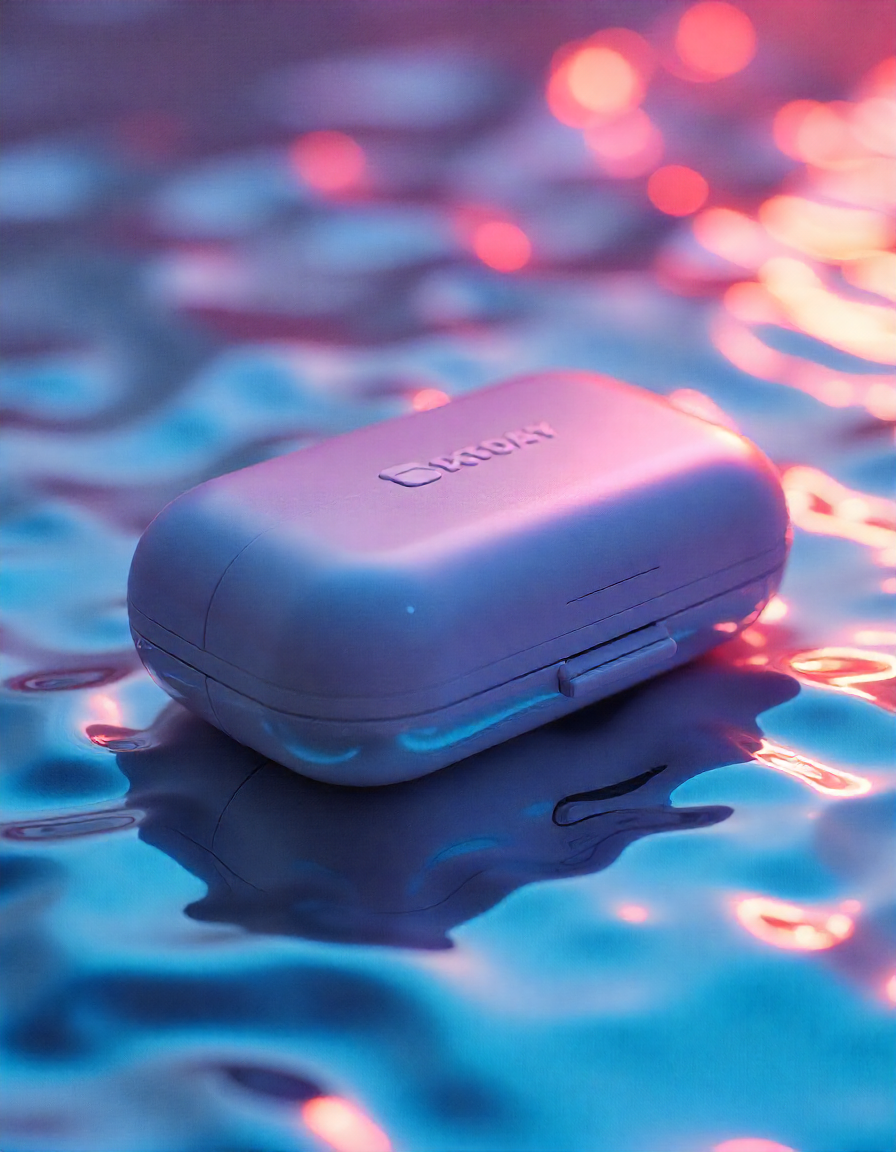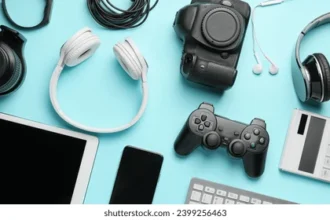The world of gadgets is ever-evolving, with new technologies constantly pushing the boundaries of what is possible. From wearable devices that track our health to smart home systems that control everything from lighting to security, gadgets are becoming an essential part of our daily lives. In this article, we will explore the latest trends in gadget development, the role these devices play in our modern lifestyle, and the innovative technologies that are shaping the future.
1. The Rise of Smart Devices: A Seamless Integration into Daily Life
In recent years, the proliferation of smart devices has revolutionized the way we interact with the world. From smartphones and smartwatches to smart homes, these gadgets have become integrated into nearly every aspect of our routines. Smartphones remain the cornerstone of the smart device ecosystem, providing users with access to a myriad of applications and services, while also serving as communication hubs for calls, messages, and social media.
Smartwatches have followed closely behind, offering convenience and functionality right at our wrists. These devices can track physical activity, monitor health metrics, and provide real-time notifications without the need to pull out a phone. Models like the Apple Watch and Samsung Galaxy Watch are equipped with features such as heart rate monitoring, ECG readings, GPS navigation, and even blood oxygen level tracking, all of which contribute to a more connected and healthy lifestyle.
But it’s not just wearables that are evolving. Smart home devices are rapidly transforming the way we manage our living spaces. Gadgets like smart speakers (Amazon Echo, Google Nest), smart thermostats (Nest, Ecobee), and smart lighting systems (Philips Hue, LIFX) enable us to control our homes with simple voice commands or mobile apps. The integration of artificial intelligence (AI) allows these gadgets to learn our preferences and adjust settings accordingly, creating a more personalized experience.
2. Wearables: Beyond Fitness Tracking
While smartwatches are often associated with fitness tracking, wearables are expanding beyond basic health monitoring to provide more immersive experiences. Devices like virtual reality (VR) headsets and augmented reality (AR) glasses are leading the charge in this evolution. The Oculus Quest and PlayStation VR are examples of VR systems that provide users with fully immersive digital experiences, from gaming to virtual tourism and beyond.
AR glasses, like Microsoft HoloLens and Google Glass, offer an entirely different form of interaction. These devices superimpose digital information over the real world, enhancing users’ perceptions and allowing for a range of applications, from navigation to education and work-related tasks. For instance, AR can guide users through complex repairs or assist them with learning new skills by overlaying instructional data on physical objects in their environment.
As technology advances, the lines between virtual and physical realities are becoming increasingly blurred. We can expect the next generation of wearables to provide even deeper levels of immersion and functionality, including holographic displays and real-time language translation, further enhancing our ability to interact with both digital and physical spaces simultaneously.
3. The Evolution of Audio Gadgets: Wireless and Immersive Sound
The evolution of audio gadgets has taken some of the most significant leaps in recent years, particularly with the advent of wireless audio technology. Wireless earbuds and headphones have taken over the audio market, with major players like Apple, Sony, and Bose leading the way. The AirPods Pro, for example, offer not only high-quality sound but also active noise cancellation (ANC), making them perfect for blocking out distractions in noisy environments.
The shift toward wireless audio has also extended to home speakers. Smart speakers such as the Amazon Echo and Google Home provide users with voice-controlled audio that seamlessly integrates with other smart devices in the home. These speakers can play music, answer questions, control lighting, and even provide reminders, creating an ecosystem that enhances convenience and accessibility.
For audiophiles, high-quality wireless audio systems like Sonos and Bose SoundTouch are available, offering high-fidelity sound with the added benefit of wireless streaming via Wi-Fi or Bluetooth. Additionally, the rise of Dolby Atmos and spatial audio technologies has created a more immersive listening experience, allowing users to experience sound as though it’s coming from all directions. This is particularly appealing for movie and gaming enthusiasts who want to experience a theater-like atmosphere at home.
4. Smartphones: Still at the Heart of Gadget Evolution
Though the smartphone market is often seen as saturated, it continues to evolve in ways that keep it relevant and innovative. The foldable smartphone is one of the most notable trends, with companies like Samsung and Huawei pushing the boundaries of traditional phone design. Devices such as the Samsung Galaxy Z Fold and Motorola Razr allow users to enjoy a larger screen in a compact form, folding the device to fit easily in their pocket when not in use.
Additionally, 5G connectivity is another leap forward in smartphone technology. The introduction of 5G networks promises to revolutionize mobile internet speeds, providing faster download and upload speeds, lower latency, and more reliable connections. This will make tasks like streaming high-definition video, playing cloud-based games, and conducting real-time video calls even more seamless.
The introduction of AI-powered camera systems is another significant development in the smartphone market. Companies like Apple, Google, and Samsung are integrating advanced AI algorithms into their camera software, enabling features such as improved low-light photography, enhanced zoom, and real-time image optimization. These advancements have made smartphone cameras the go-to option for many, surpassing traditional digital cameras in terms of convenience and quality.
5. Smart Glasses and Vision Enhancements
Vision-related gadgets are also evolving rapidly, with smart glasses taking center stage. These devices are not just for vision correction; they also offer features like augmented reality, fitness tracking, and real-time notifications. Snapchat’s Spectacles, for example, offer users the ability to record and share videos directly from their glasses, while Vuzix Blade and North Focals are AR glasses designed to provide users with digital overlays of information without the need to look at a phone or tablet.
Beyond augmented reality, vision-enhancing gadgets are also improving accessibility for people with visual impairments. Smart glasses equipped with AI-powered object recognition are helping users navigate their environments, while other wearable tech, such as the OrCam MyEye, provides real-time reading assistance by scanning printed text and converting it into speech.
6. The Role of AI and IoT in Gadget Development
As artificial intelligence (AI) and the Internet of Things (IoT) continue to grow, these technologies are influencing the design and functionality of gadgets across industries. AI enables devices to adapt to user preferences, making them smarter and more efficient over time. For instance, smart thermostats can learn a household’s temperature preferences and adjust accordingly, while smart speakers get better at recognizing voice commands and anticipating needs.
The IoT allows for seamless communication between devices, creating interconnected systems that can automate various tasks. For example, smart homes equipped with IoT-enabled devices can automatically adjust lighting, temperature, and security settings based on the time of day or the user’s preferences. The increasing integration of AI and IoT into gadgets is paving the way for more intuitive and interconnected ecosystems.
7. Future Trends: The Next Frontier of Gadgets
As we look to the future, several trends are emerging that promise to shape the next generation of gadgets. Quantum computing could revolutionize processing power, while 5G and beyond will provide faster, more reliable connections for all devices. Augmented reality and virtual reality will continue to blur the lines between physical and digital worlds, with applications in gaming, education, and professional work.
Biometric gadgets, such as smart rings and wearable health trackers, will offer more personalized experiences by monitoring and responding to individual health data in real time. Wearable holographic displays could be the next step in visual technology, offering 3D experiences without the need for bulky headsets.
Conclusion: Embracing the Future of Gadgets
Gadgets are no longer just tools—they have become extensions of our daily lives, enhancing how we interact with the world around us. From wearables that monitor our health to smart homes that respond to our needs, technology continues to advance in ways that were once unimaginable. The future of gadgets is bright, offering endless possibilities for innovation and improvement. As these devices evolve, they will continue to shape our lives in profound ways, making the world more connected, efficient, and personalized.








